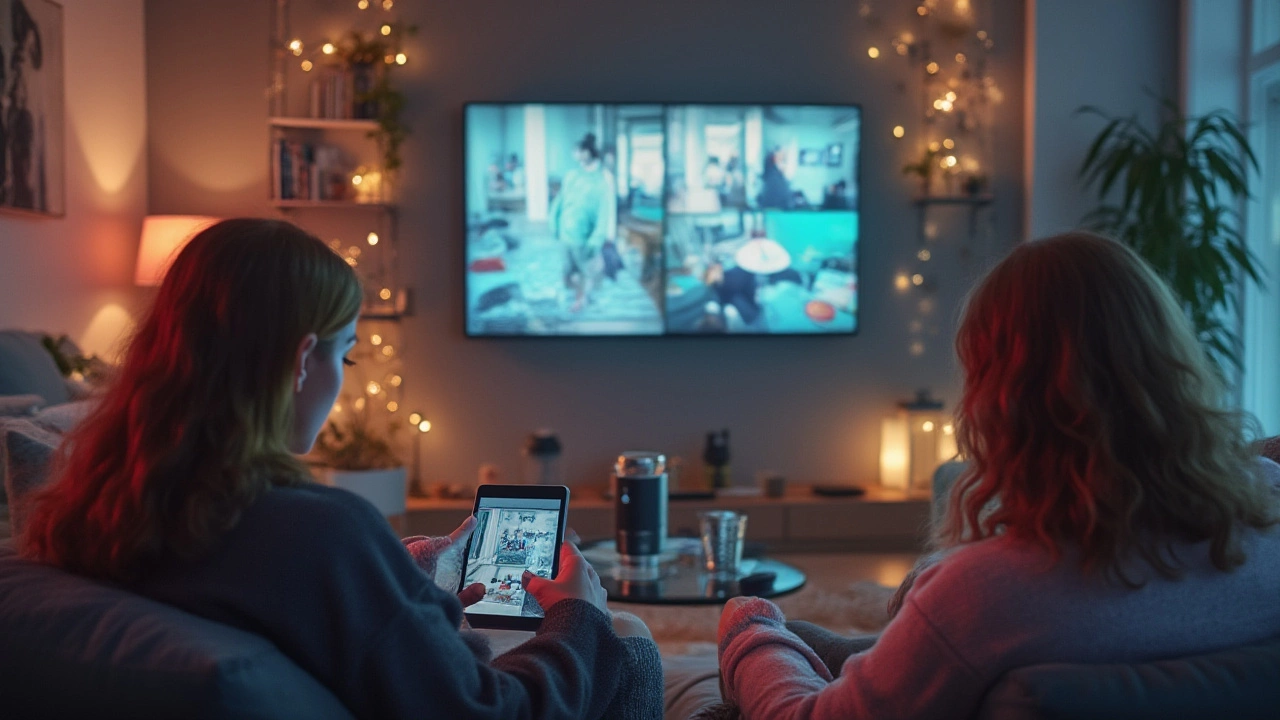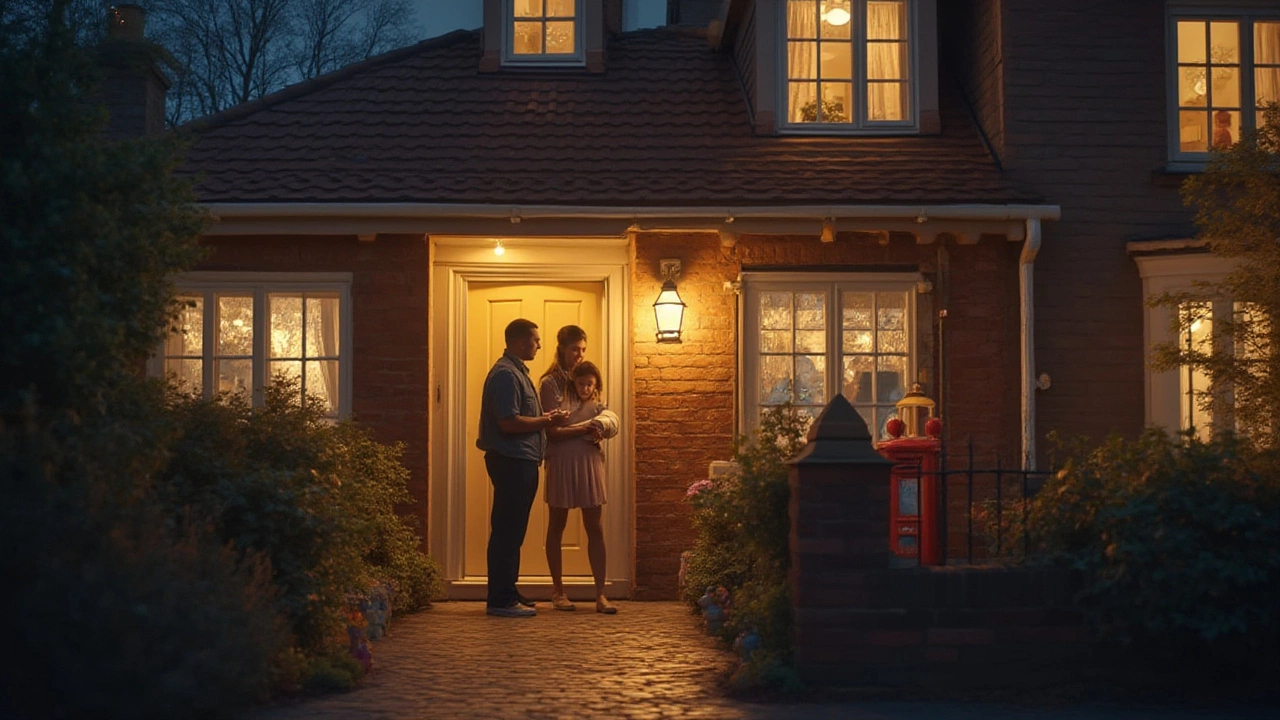Can you imagine the old days, squinting through a peephole hoping for a familiar face and expecting nothing smarter than a loud knock? Now, you can see who’s at your front door from your phone—even if you’re sitting at your desk in Newcastle or on a sunny beach holiday in Greece. Wireless video doorbells have moved past cheap gimmick territory and are now a staple for anyone serious about stepping up their front door security game in the UK. With burglars getting smarter and home deliveries piling up at the doorstep, having eyes (and ears) at your door is just common sense. But the search for the 'best' video doorbell isn’t about price tags or fancy brands. It’s about finding something that nails reliability, offers smart features you’ll use, and doesn’t turn your entryway into a drama show every time a gust of wind triggers a false alert. So, does the UK’s market have a true winner?
How Wireless Video Doorbells Became a UK Household Essential
Not long ago, knocking on doors and dodgy intercoms were the norm. Now, families across London, Manchester, and Belfast trust their front steps to a wireless video doorbell. It wasn’t always this popular—in fact, UK adoption started climbing fast around 2020, thanks to lockdowns and the explosion in online shopping. Suddenly, missed packages (and missed visitors) became a headache, and the idea of seeing, talking, and tracking who’s at the door—without physically opening it—became very appealing.
Another big driver? Crime trends. The Office for National Statistics reports that domestic burglary in England and Wales remains stubbornly high, but households with visible cameras or smart entry systems are much less likely to get targeted. Video doorbells, once a niche gadget, are now a key weapon for homeowners and renters alike. Even insurance providers have started offering small discounts for homes using smart security tech—wireless video doorbells included.
The thing is, today’s devices aren’t just about watching. Motion detection, instant notifications, two-way talk, night vision, and seamless app integration—features once reserved for swanky homes—can now live on a suburban terrace or city flat. Major cities pushed the demand, but now devices are found in rural areas, small towns, and even shared student housing. People want something that works, doesn’t demand a PhD to set up, and is reliable no matter how awful the British weather gets.
Stats don’t lie: a 2024 market survey by Statista pegged UK sales of smart doorbells at nearly £75 million, with wireless models taking more than half the pie. Battery-run choices outsell wired ones three to one. If you’re renting, own your place, or simply hate tangled cables, chances are a wireless doorbell will fit your lifestyle better.
And it’s not just about ‘seeing who’s there’. Real user habits show that most people want easy video playback, a slick app for sharing footage (especially helpful for reporting incidents), privacy zones to keep neighbours’ paths out of shot, and something that won’t die in two years. That’s set the bar high for today’s best models.
Features That Actually Matter: Real-World Needs, Not Hype
Now’s where it gets interesting. If you’ve ever scrolled through product pages, you’ll notice fancy terms everywhere—"HDR video," "3D motion sensing," "AI-powered alerts." Which features are worth paying for and which are just there to make the box look shinier?
Let’s talk basics first. Video quality is king—if you can’t easily recognise faces (or the courier’s barcode), it’s pointless. 1080p HD is now standard, but some pricey models push all the way to 2K or even 4K. For most UK porches, 1080p does the trick. What helps more is a good field of view; 160° or more means you’ll catch the whole doorstep, not just someone’s midriff if they’re standing off to the side.
Reliability in rain, wind, or whatever the British sky throws at you—that’s not negotiable. Look for IP ratings (like IP65 or IP66); these tell you the doorbell actually shrugs off water and dust, not just a light drizzle.
Battery life is huge. Some wireless video doorbells need charging every couple of months, others stretch to six months or more on a charge—especially in milder climates. For those in apartments, the charge process is easy, but for bigger homes, it’s a pain climbing ladders. Some models, like the Eufy Battery Doorbell 2K, offer swappable batteries, so there’s no downtime. Solar add-ons? They can be a life-saver for high-traffic doors, though they only really work if your door faces the sun (not always likely in the UK, right?).
Smart notifications beat endless pings. Basic motion sensors catch cars and blowing leaves, flooding you with alerts. The best models now use human detection or AI to spot the difference between a person, parcel, or pet. This also means they don’t drive you mad with dozens of irrelevant warnings.
Two-way audio lets you chat with delivery folks, tell callers you’re just upstairs, or freak out would-be burglars from miles away. Loud, crisp audio with noise reduction is key—for both you and the person outside. If you can’t be heard, it can make things awkward real fast.
What about storage? Cloud plans (monthly fees) are common, but local alternatives—SD cards, in-home hubs, or encrypted storage—are making a comeback. Some folks just don’t want their footage sent to a server overseas, especially after headlines about big brands taking liberties with user data.
Then, privacy and smart features. Customisable motion zones let you blank out public pavements so your doorbell doesn’t become the neighbourhood’s Big Brother. Integration with smart home setups like Amazon Alexa, Google Home, or Apple HomeKit is a must for lots of buyers—and frankly, it makes everyday life smoother if you already use those devices. Just double-check compatibility on UK-specific models; there are still frustrating gaps in support, especially with Apple.

The Best-Selling Wireless Video Doorbells in the UK Right Now
So which video doorbells are people actually buying, and why? Let’s cut through the sea of Amazon reviews and glossy ads. Three brands dominate in the UK—Ring, Google Nest, and Eufy. Here’s how their flagship models stack up for 2025.
- Ring Video Doorbell 4: The latest Ring model is still a strong favourite. It’s got sharp 1080p video, colour pre-roll (so you see action before someone presses the bell), and solid Alexa integration. Batteries last typically four to six months, recharging is hassle-free, and Ring’s app remains one of the easiest to use. What sets it apart? The neighbourhood sharing feature—handy for reporting suspicious events locally. Downsides: video storage needs a cloud subscription (Ring Protect), and it won’t sync with Apple HomeKit. Reliability in heavy rain is solid, and their customer support is UK-based.
- Google Nest Doorbell (Battery): Super clean design, works tightly with Google Home, and delivers smart alerts that can spot people, packages, and sometimes animals. You get hours of free ‘event’ storage, and the camera handles low light like a champ. Setup is easy, and it’s ideal for folks already deep in the Google ecosystem. Keep in mind: video clips longer than a few hours or full-length recordings need Nest Aware, a paid plan. No HomeKit support, but rock-solid integration with Android smartphones and smart speakers.
- Eufy Battery Video Doorbell 2K: The poster child for folks who want zero monthly fees. 2K video leaps ahead of many competitors (especially if you have a wide porch or want to peek further down the path). Local storage means you’re in charge of your own footage, no recurring costs. The AI on motion detection is surprisingly accurate—rarely triggers for passing cars or pets. It integrates with Alexa and Google, but not Apple. The main catch is size: it’s a bulkier unit, but if you want value and privacy, it’s hard to beat.
- Arlo Essential Wire-Free Video Doorbell: High-res video (1536 x 1536 pixels, so faces are obvious), wide field of view, and serious weatherproofing. The built-in siren can startle intruders or get a neighbour’s attention. Unlike some rivals, Arlo offers a bit of storage without the subscription, but full features need Arlo Secure.
- TP-Link Tapo D230S1: Not as famous, but getting plenty of buzz for combining great battery life with impressive night vision and a bundle that includes both the doorbell and an indoor chime. It’s definitely a value contender, and the Tapo app is clear and smooth. No smart assistant support yet, but for basic security it’s a rising star.
All these choices are available through mainstream UK retailers. Installation, on average, takes about 20 minutes—but if you aren’t handy, pro install services are widespread these days (and occasionally offered as a promo by the brands themselves).
What Real UK Buyers Are Saying: Pros, Cons, and Lessons Learned
It’s easy to get caught up in marketing spin, but regular users are where you’ll find the real scoop. Digging through UK forums, YouTube reviews, and Trustpilot feedback, a few recurring themes appear.
Battery life rarely matches the most optimistic specs. Heavy traffic doors (think busy London terraces or central Manchester flats) might chew through a charge in six weeks, not six months. If your door faces the street, expect frequent charges, and consider hardwired options if you own your home. Folks in less busy neighbourhoods do report hitting those 4-6 month marks easily.
False alerts are still an issue if you go cheap. Cheaper brands often skip advanced person/animal recognition, so you get bombarded with unnecessary notifications. Paying more nearly always means better filtering, and most users say this is worth it to keep their phones sane.
Video lag is a real frustration with some Wi-Fi setups—mainly if your router is at the other end of a Victorian house with thick walls. Mesh Wi-Fi or signal extenders can be a fix, but these are extra costs. Wired ethernet or Powerline adapters are impossible here, so wireless mesh is your best bet if lag bothers you.
Subscription fatigue is emerging. A lot of people like the idea of ongoing cloud video, but monthly fees add up, especially as families collect more smart gadgets. That’s why Eufy’s local storage, or camera plans offering free event storage (like Google's limited but useful event clip access), score big.
Privacy matters. After several headlines about data leaks or unauthorised footage access, many UK buyers are getting much savvier about where their video lives. Look for brands with clear (and UK-compliant) privacy policies. Local storage options are growing for a reason—people don’t want everything in the cloud if they can help it.
Some cool tricks shared by owners: using smart speakers (“Echo, show me the front door!”), pairing the doorbell chime to multiple rooms, or setting up extra sensors to trigger the doorbell camera. In a few cases, folks use the motion alerts as mini CCTV outside garages, especially in homes without separate security.
For renters, portable models with zero drilling are huge—quick to install, quick to take down. Removable adhesive mounts or bracket kits are becoming standard for this reason, and many landlords are happy as long as nothing’s permanently fixed.
Last tip from buyers: check your Wi-Fi before buying! If your phone gets one bar at your entryway, your video doorbell won’t work well. Upgrading your router or boosting the signal is often needed before you even think about cameras. It’s a boring extra cost, but worth it to avoid a security headache later.

Picking the Best Wireless Video Doorbell for You
With all the choices, how do you cut to the chase and find your perfect fit? Here’s the bottom line. If smart assistant integration is a must for you, the Ring Video Doorbell 4 still rules, thanks to deep Alexa support and that community safety edge. If privacy, no fees, and maximum bang for buck matter more, Eufy’s 2K Battery Video Doorbell stands out. Google Nest is the smart play for committed Google fans, while TP-Link and Arlo are solid all-rounders if you want a mix of price, visuals, and reliability.
For UK buyers, it’s all about balance. Look for weather rating, real battery life reports, and a fair privacy policy. Avoid no-name brands with poor support or apps that look like a 2011 website. Value models can tempt, but they’re a false economy once you factor in downtime, constant false alerts, or glitchy connections.
If you’re nervous about setup, breathe easy—retailers and even the brands themselves offer step-by-step installation, and there’s a small army of YouTubers happy to walk you through the process. Stick to trusted retailers (Argos, Currys, Amazon UK) to dodge dodgy knock-offs.
One last word—always test your notifications, night vision, and two-way talk right after setup. Reach out to support if anything lags or doesn’t work first go. The best video doorbell is the one you actually use every day.
Ready to replace that tired old bell next to your door? Today’s best wireless video doorbells make it dead simple to stop missing visitors, protect your stuff, and stay connected to your home—no matter where you are. The real question isn’t whether you need one, it’s which one gets to be your new front door guard.

